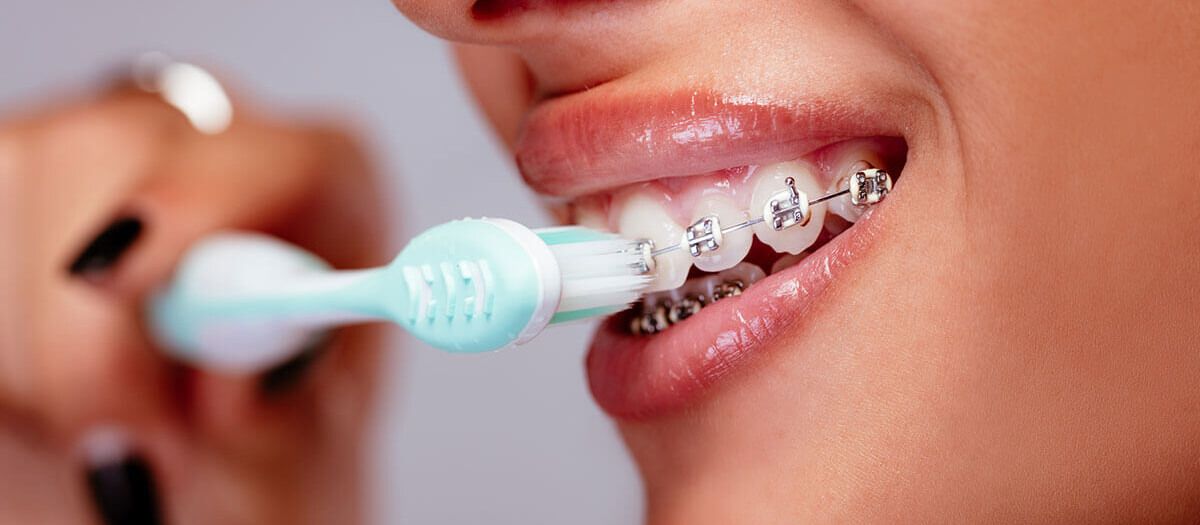How Cumming Orthodontics Can Change Your Smile with Invisalign and Braces
How Cumming Orthodontics Can Change Your Smile with Invisalign and Braces
Blog Article
Comprehensive Overview to Orthodontics Procedures for Dealing With Oral Misalignments
In the realm of orthodontics, the trip to achieving a flawlessly aligned smile includes a myriad of treatments customized to correct dental imbalances. From traditional dental braces to undetectable aligners and even surgical alternatives, the area of orthodontics offers a variety of remedies to address varying levels of oral abnormalities. Recognizing the complexities of each procedure, including their systems, advantages, and possible downsides, is essential in making notified decisions about one's orthodontic treatment. As we navigate with the detailed overview to orthodontic treatments for remedying dental misalignments, the complex information of each approach will certainly unravel, losing light on the course towards a unified and useful oral placement.
Orthodontic Procedures Introduction

Routine changes and monitoring are vital components of orthodontic treatment to guarantee progress is on track and to make any type of needed alterations along the means. By going through orthodontic procedures, patients can not just achieve a straighter smile however likewise enhance their general oral health and wellness and feature.
Standard Dental Braces: How They Function
When considering orthodontic treatments for dental misalignments, traditional braces stand out as a reliable approach for correcting teeth placing. Conventional braces consist of brackets, cables, and bands that work with each other to apply continual stress on the teeth, slowly relocating them right into the wanted positioning.
One secret facet of just how conventional braces work is the process of bone remodeling. As stress is related to the teeth via the dental braces, the bone surrounding the teeth is reshaped to sustain the brand-new tooth positions. This remodeling is essential for the long-term security of the remedied alignment. Clients will need routine modifications at the orthodontist's office to make sure the braces remain to use the appropriate pressure for efficient teeth movement.
Invisible Aligners: Pros and Disadvantages
These clear, custom-made trays are essentially undetectable when worn, making them an attractive option for individuals seeking an extra aesthetically pleasing orthodontic treatment. People can remove the aligners before eating or brushing their teeth, decreasing the risk of food getting stuck in the appliance and streamlining the cleaning procedure.

Surgical Orthodontic Options
Surgical interventions in orthodontics existing practical choices for attending to complicated oral misalignments that may not be efficiently fixed with conventional orthodontic therapies. While traditional braces and unnoticeable aligners can fix lots of orthodontic problems, specific situations call for medical treatment to accomplish ideal results. Surgical orthodontic choices are typically advised for severe malocclusions, substantial jaw inconsistencies, and instances where the underlying bone framework requires adjustment to accomplish proper positioning.
One common medical orthodontic treatment is orthognathic surgery, which involves repositioning the jaws to deal click this site with functional concerns such as trouble chewing or speaking. This surgery is commonly performed in collaboration with an orthodontist that helps line up the teeth prior to and after the procedure. Surgical orthodontics might likewise involve treatments to reveal affected teeth, remove excess gum tissue, or improve the jawbone to produce an extra harmonious face account.
Prior to thinking about surgical orthodontic choices, patients undertake a comprehensive assessment to determine the necessity and possible benefits of such interventions. braces. While surgical treatment may appear challenging, it can considerably boost both the function and aesthetic appeals of the smile in cases where traditional orthodontic treatments drop short
Retainers and Post-Treatment Care

Post-treatment treatment involves complying with the orthodontist's instructions faithfully. This might include appropriate dental health practices, participating in follow-up appointments, and using the retainers as recommended. Failing to abide with post-treatment care directions can result in regression, where the teeth gradually return in the direction of their original placements. Constant retainer wear, excellent oral health, and regular oral examinations are important for preserving the outcomes attained through orthodontic surgical procedure and making sure the long-term security of the remedied oral alignment.
Conclusion
In verdict, orthodontic treatments use different options for remedying oral imbalances. Surgical orthodontic alternatives are offered for much more extreme misalignments. On the whole, orthodontic procedures can efficiently enhance dental health and wellness and visual look.
As we navigate with the comprehensive overview to orthodontic procedures for dealing with dental imbalances, the intricate information of each method will certainly unfold, losing light on the path toward a functional view it and harmonious dental positioning. - orthodontist
One of the most common orthodontic therapies is the use of dental braces, which consist of metal braces and investigate this site wires that apply mild stress to progressively shift teeth into the wanted setting.When thinking about orthodontic treatments for dental misalignments, standard braces stand out as a reliable approach for correcting teeth positioning. Furthermore, unnoticeable aligners may not be ideal for complicated orthodontic problems that call for more significant teeth movement, as they are commonly suggested for mild to modest cases. Retainers are custom-made orthodontic devices developed to hold teeth in their corrected settings after the conclusion of orthodontic treatment.
Report this page